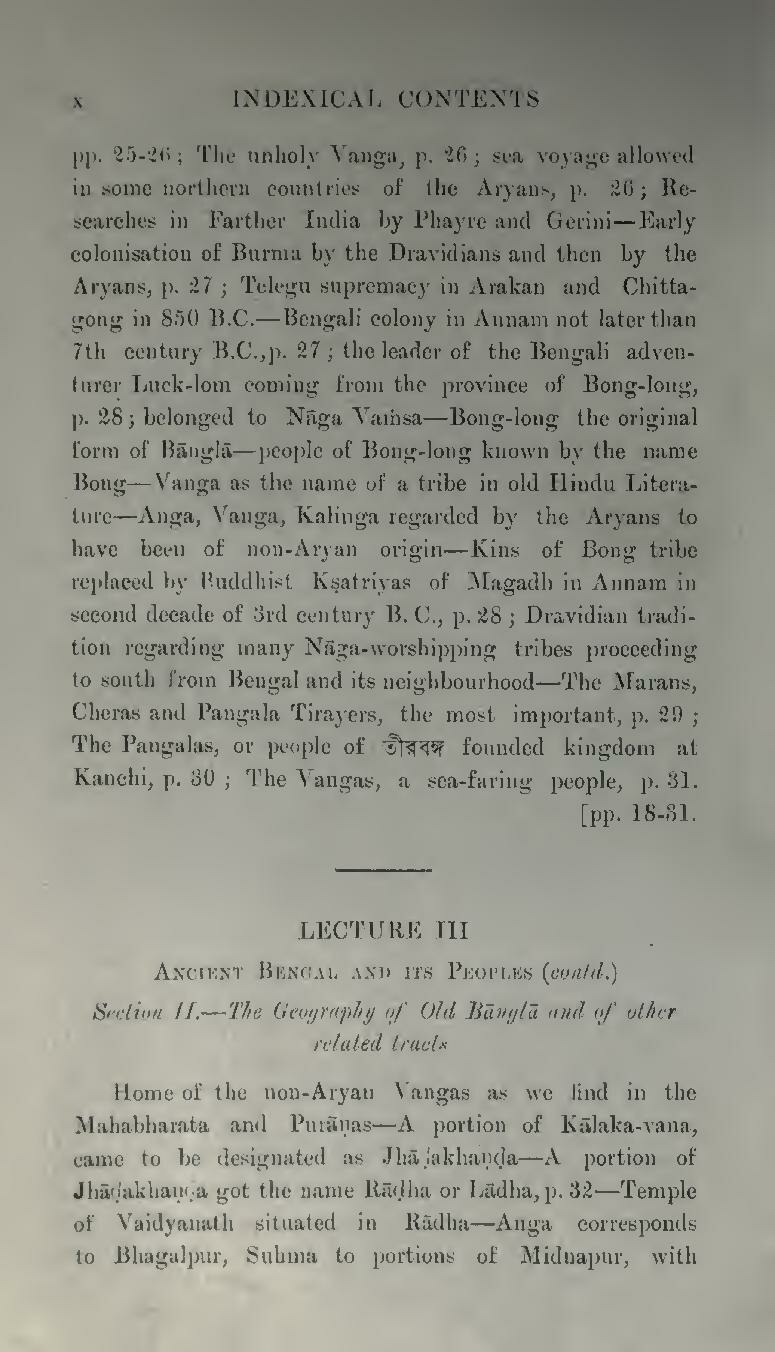pp. 25-26; The unholy Vanga, p. 26; sea voyage allowed in some northern countries of the Aryans, p. 26; Researches in Farther India by Phayre and Gerini—Early colonisation of Burma by the Dravidians and then by the Aryans, p. 27; Telegu supremacy in Arakan and Chittagong in 850 B.C.—Bengali colony in Annam not later than 7th century B.C., p. 27; the leader of the Bengali adventurer Luck-lom coming from the province of Bong-long, p. 28; belonged to Nāga Vaṁsa—Bong-long the original form of Bānglā—people of Bong-long known by the name Bong—Vanga as the name of a tribe in old Hindu Literature—Anga, Vanga, Kalinga regarded by the Aryans to have been of non-Aryan origin—Kins of Bong tribe replaced by Buddhist Kṣatriyas of Magadh in Annam in second decade of 3rd century B. C, p. 28; Dravidian tradition regarding many Nāga-worshipping tribes proceeding to south from Bengal and its neighbourhood—The Marans, Cheras and Pangala Tirayers, the most important, p. 29; The Pangalas, or people of তীরবঙ্গ founded kingdom at Kanchi, p. 30; The Vangas, a sea-faring people, p. 31.
[pp. 18-31.
Ancient Bengal and its Peoples (contd.)
Section II.—The Geography of Old Bānglā and of other related tracts

